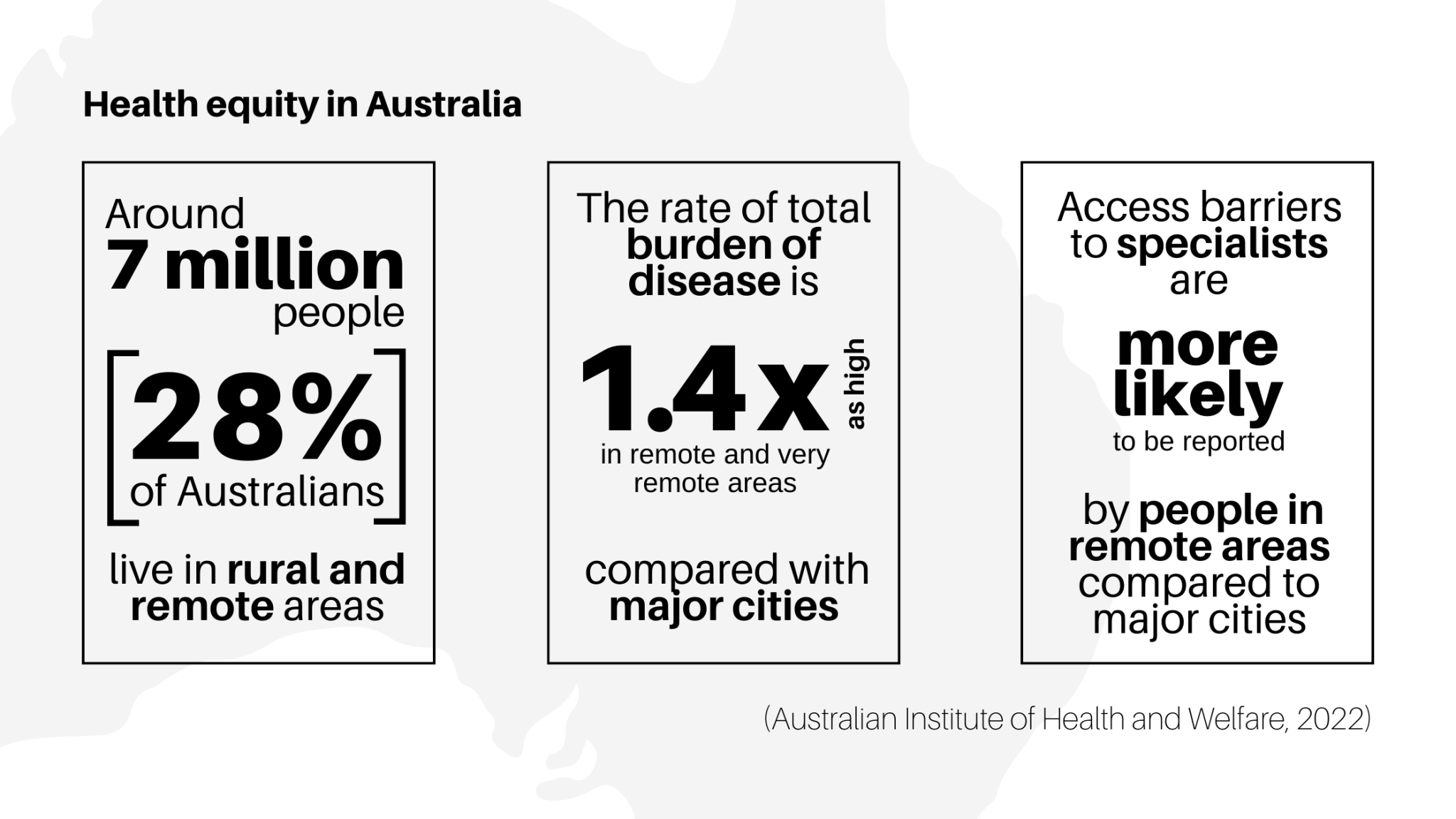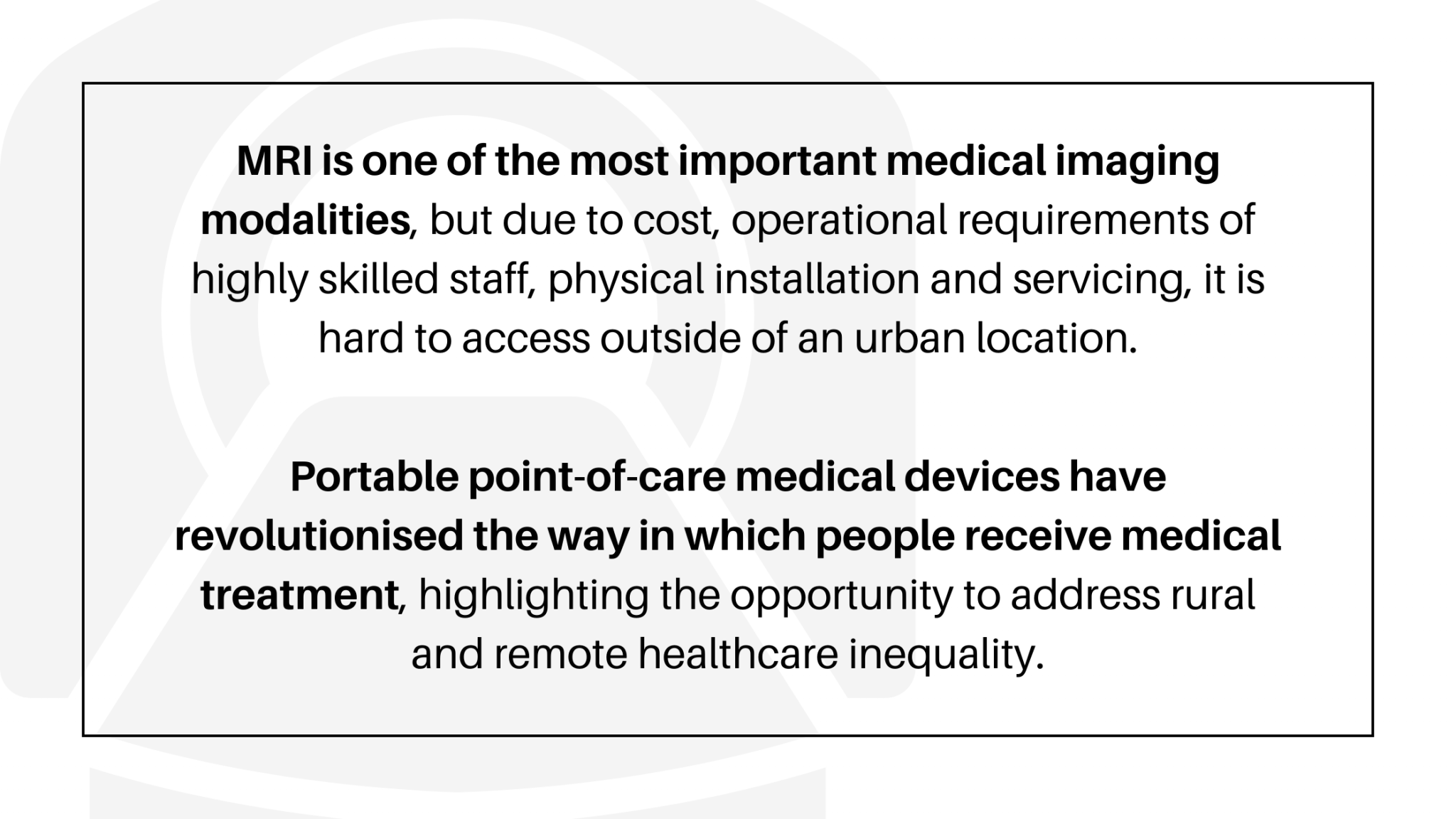National Imaging Facility (NIF) is deploying four low-field portable MRI scanners to remote and regional sites to help researchers apply this affordable imaging technology in rural areas.
Australians living in regional and rural areas unduly suffer lower life expectancy and a higher burden of diseases because of poorer access to health services, including reduced screening, late detection and barriers to treatment compared with people living in metropolitan areas.

The national mobile magnetic resonance (MR) network will be the first project of its kind world-wide and is a collaboration with partners including Monash University, University of Queensland, South Australian Health and Medical Research Institute (SAHMRI), the Alfred Hospital, Royal Perth Hospital, University of Western Australia and MedTech company, Hyperfine.
The Hyperfine Swoop is the world’s first highly portable MR imaging system capable of providing neuroimaging at the point-of-care, designed to fit inside elevators and through doorways to be manoeuvred directly to a patient’s bedside, and plug into a standard electrical outlet.

These portable scanners will be used to understand how this fast-developing technology can help diagnose stroke, traumatic brain injury, and other conditions after testing in research laboratories at NIF nodes in Victoria, Queensland, South Australia and Western Australia.
The scanners will enable real time tele-reporting and either remote operation or point-of-care use with low training requirements.
NIF is uniquely positioned to support work to build the usability of low-field MR technology, including developing techniques to maximise data quality.
Researchers at these sites will scan subjects on low-field mobile MR and high-field 3T MRI instruments to build a unique database that can be used to bridge the gap in outputs.
This valuable data will be made available by NIF to researchers to develop techniques to improve image processing and better understand how low-field scans can be interpreted.
Head of the Imaging Analysis Team at Monash Biomedical Imaging and Project lead Chief Investigator, Dr Zhaolin Chen said the collaborative work across NIF Nodes was critical to the success of the project.
“This nationwide network is critically important to identify a viable pathway for point-of-care MRI technology to be used in Australia,” Dr Chen said.
“Multi-site data acquisition is already underway and AI-based solutions to expand utility in regional Australia are in development.
“The network enables our project team to share knowledge, cross-validate findings, optimise resources and plan the next steps, which ultimately provides a route from research into clinics,” Dr Chen said.
NIF Chief Executive Officer, Prof Wojtek Goscinski said there were additional long-term advantages to deploying the national mobile MR network to regional Australia.
“NIF is focused on keeping Australia at the forefront of imaging, and the national mobile MR network is an innovative application of new technology to improve accessibility,” Prof Goscinski said.
“We hope these data collections and the AI models researchers build using them will lead to better technology that will improve treatment and diagnosis for Australians.
“This work will provide the foundation for the development and application of AI in clinical practice for low-field MR scanners, with experts optimising image quality for clinical data usability with reduced noise and improved resolution.
“The national mobile MR network and NIF’s increased national human imaging reach will enable innovative health research in remote populations, improve low-field MR technology, and over the long run will help increase access to better healthcare, professional training and socio-economic equity,” Prof Goscinski said.